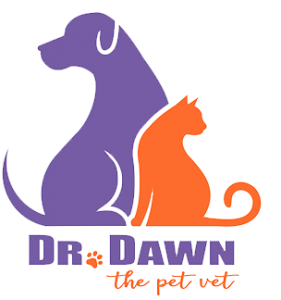I attended a meeting yesterday with the title: Age is Not a Disease. It was right down my alley, as a large portion of my patients qualify as “geriatric”. We learned many pearls of wisdom for the more common complaints that our older patients have. We discussed topics such as drinking more, weight loss, pain and changes to the eyes. We discussed medication doses that may be more appropriate for an older patient who might be more likely to have certain medical conditions. If you live with an older dog or cat, you might guess that we talked about heart disease, kidney disease, hyperthyroidism, a little bit about arthritis, diabetes, Cushing’s disease, and cataracts, to name a few. Most patients have a combination of issues, and all need to be carefully considered when treating them. On the cover of the health page of my newspaper was an article discussing exactly this, titled “Diabetes can break your heart, literally”. The message: cardiovascular disease and diabetes go hand in hand. The same goes for our pets. So, the older we, and our pets get, the older our body parts get, and that’s when people like me are contacted for advice on how to help. Age itself is not a disease, but certain diseases seem to pop up more with age.
But how old is old? What I mean is, at what age is a dog or cat considered senior, geriatric, old, seasoned? Call it what you want, but there are some parameters that can help you gauge what version of dog or cat food you should be buying. Here is what we were told to use as an official reference point.
- Animals are considered geriatric when they have reached greater than 75-80% of their expected life stage. This calculation correlates with their body size. S0, the starting age cutoff to consider your pet as geriatric would be the following:
DOGS:
Small dogs (less than 20 lbs) 9-13 years
Medium (20-45 lbs) 9-11 1/2 years
Large (50-85 lbs) 7 1/2-10 1/2 years
Giant (over 85 lbs) 6-9 years
CATS over 10 years
Here was what one of our slides said:
Aging is not simply the passage of time. It is a physiological, irreversible and progressive process. Degenerative changes in the structure and functional reserve of organs and tissues occurs. Advances in veterinary medicine = increased number of geriatric animals.
And more fun facts, courtesy of the American Animal Hospital Association:
- Up to 85% of dogs and cats over 6 years of age suffer from periodontal disease, gingivitis or oral cancer
- Approximately 10% of dogs over the age of 12, and about 7% of all aged dogs have either kidney, or heart and lung disease.
What does this mean for you?
I am saying things you already intuitively know. Many of you may be, in fact, aging yourself, and experiencing some of these symptoms. Actually, I know for a fact that you are aging at this very moment. It is important to know what to look for, what to call the vet about, and what you can do to make sure your dog or cat’s senior years are as comfortable and happy as they can be. Selecting the correct food, identifying arthritis, knowing changes in the amount of drinking and eating, and being observant for nuances in their weight gain or loss, are some of the things that may be hinting at an underlying issue that might be remedied when caught early. It is good news to see that animals are living longer lives. The lengths that clients will go to to offer the best to their pets is heartwarming and astounding. We know that puppies and kittens need to see the doctor frequently when first adopted. It is just as important, or maybe even moreso, to see the veterinarian if your older pet is manifesting certain signs.
- Is he eating less, or does he have a voracious appetite, that is seemingly never satisfied? Is he losing weight while eating more, or gaining weight? Is the weight gain causing a potbelly appearance?
- Do you notice changes in his eyes? Are they hazy, or with a whitish/blue appearance? Is he having a lot of trouble seeing all of a sudden?
- Is he drinking more than he used to? Is he urinating more? How much is a normal amount of water?
- Does he have trouble getting up in the morning and after a nap? Is he having trouble going up or down stairs, or both? Does he cough when he sleeps, wakes up, goes for a walk? Does he tire out more easily? Does he breathe harder or faster than he used to after activity?
- Does he vomit sometimes? More than he used to?
- Is there an odor coming from his mouth? Are his gums red or swollen?
These are things I try to have my clients to take note of, and to notice changes in. Knowing the normal color of your pet’s gums, and how moist they feel, where the pulses are easily felt to get an idea of normal, what is a normal resting breathing rate for your pet, are all things you might want to figure out, so that you can determine if something is new or a potential concern. You will be better equipped to answer the list of questions your vet asks when you see her.
Dr. Dawn
Please share and subscribe here







